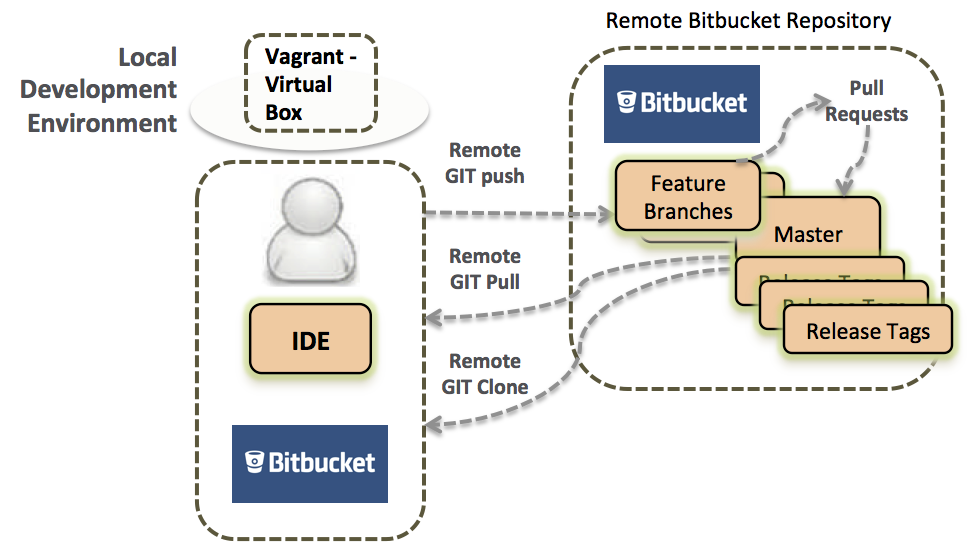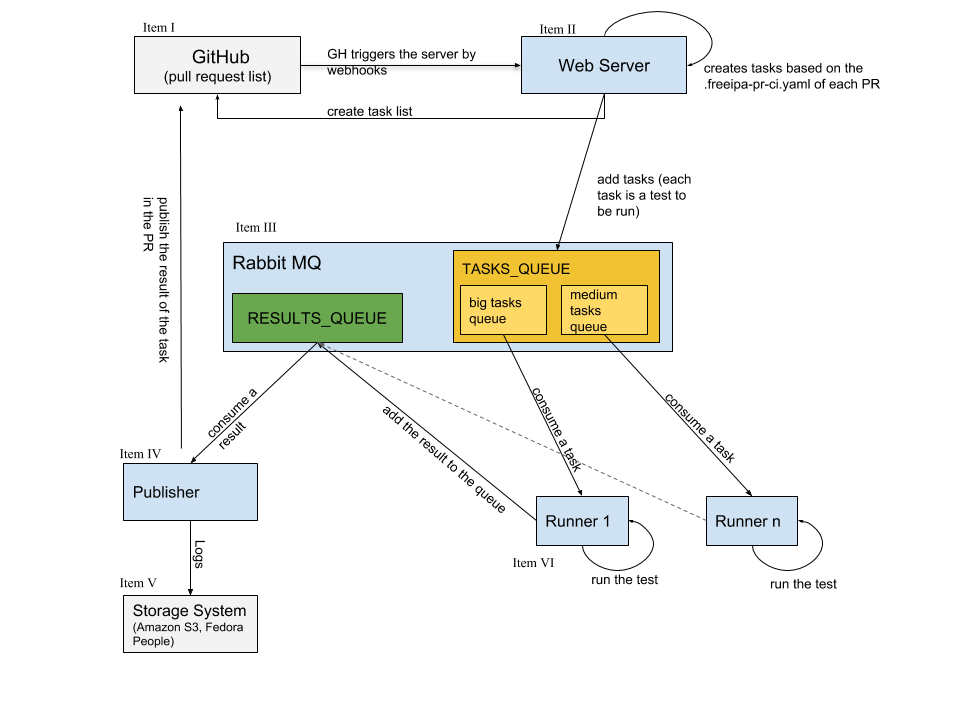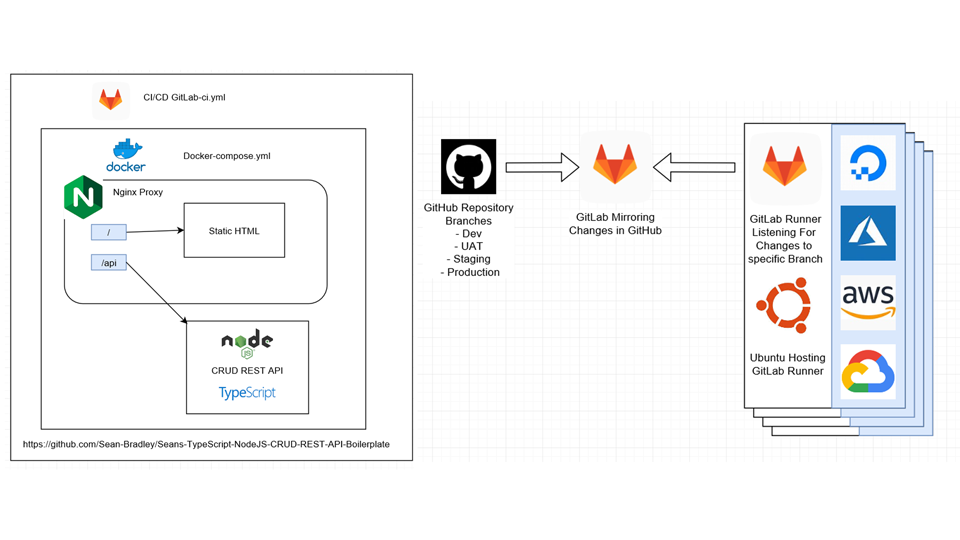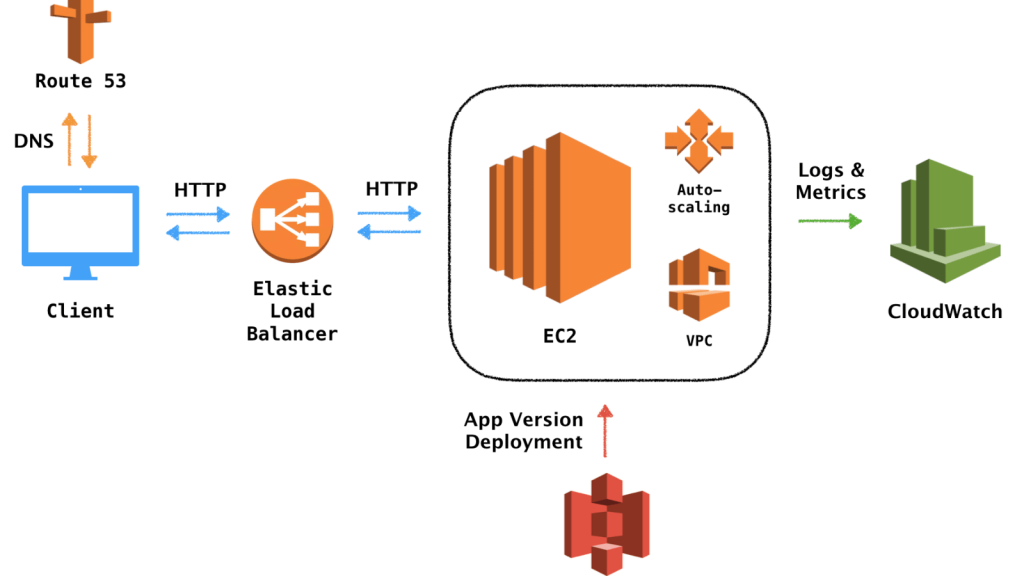
- Bitbucket
- GitHub
- GitLab
- Perforce
- Beanstalk
- Amazon AWS CodeCommit
- Codebase
- Microsoft Azure DevOps
- SourceForge
- Gerrit
1. Bitbucket:-
Bitbucket is counted amongst one of the best tools in the Git hosting version control category. Launched in the year 2008 and later acquired by Atlassian and they are doing a great job improving Bitbucket since they acquired it.
It is considered as more than just Git hosting solution. Bitbucket gives teams one place to plan projects, collaborate on code, test, and deploy. This tool is loved by users based on multiple facts such as – Free version, Competitive pricing, Small teams, Developer collaboration. And Bitbucket is available for Mac, Windows Linux, iOS, and Android.
What are the pros and cons of Bitbucket?
- Free for 5 users – you can get an unlimited number of free private repositories.
- Integrated query management
Role of Bitbucket?

In this video you can see more information about Bitbucket
- GitHub:-
GitHub is an open-source hosting platform, which provides the software development version control to the users. Github is a cloud-based service platform where developers manage and store their codes. Its help to change and track code with the possession of full authority. Nowadays GitHub is the largest online storage space of collaborative works that exists in the world. GitHub is a free open-source and clean interface with the powerful and useful features that a developer can leverage on. GitHub becomes the go-to hosting platform for projects using Git.

Key-features of GitHub
- Integrated issue and bug tracking.
- Graphical representation of branches.
- Approximately 6 million hosted git repositories
- Field-tested project tools
- Integrated issue tracking functionalities
- Collaborative code review
- Team and organization management features
- Supports over 200 programming languages
In this video you can see more information about GitHub
- GitLab:-
GitLab is an open-source code repository and collaborative development platform. Gitlab launched in 2011 is written in Ruby and GO. GitLab supports both public and unlimited private development branches, its a more trusted brand which is also used by even NASA. GitLab has more than 1400 contributors which make it one of the most reliable service provider.
GitLab is an open-source code repository and collaborative development platform.

Key-features of GitLab
- Statistics and analytics features.
- Project planning and management features.
- Source code, data creation, and management features.
- Testing, code quality, and continuous integration features.
- Application release and delivery features.
- Application and infrastructure configuration tools.
- Unlimited public and private repository
- web-based Git repository manager
In this video you can see more information about GitLab
- Beanstalk: –
Beanstalk is an orchestration service it provides by Amazon web service for deploying and automates the process of getting applications. Beanstalk is a secure, powerful and most reliable GitHub alternative tool. It helps you to manage source code repositories. It is designed to improve your development workflow. A platform is a combination of all the AWS Beanstalk components, an Operating system, a programming language runtime, and a webserver to run the applications.

Key-features of Beanstalk
- Easy to start with Auto-scaling options
- Accelerate the development pipeline, including testing and debugging
- Lightning Fast Configuration with Automation
- Support for web and application containers, including Docker.
- Powerful Customization
- Support for both Linux and Windows Server based environments.
In this video you can see more information about Beanstalk
- Perforce:-
Perforce is an application lifecycle, software configuration management tools. Its a version control and collaboration products, static code analysis and repository management solutions. Perforce is useful for project development as it helps to have multiple workspaces on a single machine, the GUI tools seem to be more feature-rich, especially the eclipse integration. Perforce used to keep track of version content management, software and game development database and more.

Keyfeatures of Perforce:-
Branching and Merging
Faster Performance at Scale
Better Collaboration For Global Teams
Accelerate follow-the-sun development with high-speed asset synchronization
Protect your most valuable corporate assets, even when transferring them over the public internet.
In this video you can see more information about Perforce
6. Amazon AWS CodeCommit
Amazon AWS CodeCommit is hosted and completely managed by Amazon, it can be used to privately host data and manage them in the cloud. It gives high scalability, security and helps manage source control service, which is used to host private Git repositories. Generally, it supports all the standard functionalities that can be done via Git, which means it eliminates the requirement for the user to know Git and manage their own source control system or worry about scaling up or down their infrastructure.
AWS CodeCommit Pros:
- In AWS CodeCommit you can create up to 1,000 repositories by default and no limits upon request.
- AWS CodeCommit stores repositories in services like Amazon S3 and Amazon DynamoDB which provides high availability and durability.
- AWS CodeCommit is good with notifications and custom scripts.
- As its from AWS – it’s automatically scales to meet the growing needs of your project.
- It’s highly secure with encrypted features.
- Easy to integrate with third-party tools.
- It’s fasten the development lifecycle. You can easily transfer incremental changes instead of the entire application.
How to use AWS CodeCommit?
7. Codebase
Codebase is great for teams for keeping track of code and managing projects to ensure the continuous delivery of excellent software. It’s a professional code hosting for developers, and it allows software teams to choose the repositories.
Codebase Pros:
- A reliable Git hosting service with added features of project management tools.
- Provides unlimited repositories.
- Easy to compare changes between two specific commits, branches and tags.
- Deployments can be tracked in your activity feed with a link to view all changes.
- Provides source tree browsing, using the Codebase browser.
- In built code review features.
- Automatically created a concise report with every TODO, FIXME, OPTIMIZE and BUG comment found in the codes.
- Easy to filter them and convert into tickets with single click.
- You can keep track of every hour spent on a project with time tracking feature.
How to use Codebase?
8. Microsoft Azure Repos
One of the Microsoft Azure DevOps components – “Azure Repos” provides private and unlimited Git repository hosting in the cloud. In addition to GiT hosting, this platform includes its own Continuous Integration service and tracks work, and ships software for any language, all in a single package.
Azure Repos Pros:
- Free for first 5 users with unlimited private repositories
- One-stop solution for all tools needed for DevOps methodology
- You can recover deleted branches
- GVFS support available for corporate Git repos
- Custom Git servers to support organizations
- Gives semantic code search option which make it really quick to find what you’re looking with code-aware search that understands classes and variables
- Web hooks and API integration
Azure Repos Cons:
- Preferred by the enterprises
- Even Microsoft themselves hosts most of their open-source projects on GitHub
- Minor issues with performance if we will compare it with major competitors
- Sometimes users feels lack of integration with some important technologies
How to use Azure Repos?
9. Sourceforge
Sourceforge is been around longer in the industry than many of the other git hosting solutions and this is considered Sourceforge is been around longer in the industry than many of the other git hosting solutions and this is considered as a preferred choice amongst Open Source developers. Windows, Linux, and Mac open source projects are typically hosted on Sourceforge. If we would spend time on their website then they have mentioned there that their popular directory connects approximately 30 million users monthly and with all of these open-source projects they serve more than 2.6 million downloads a day.
Sourceforge pros:-
- Great User Interface
- Downloading is fast and easy
- Integrated Issue Tracking
- Host code with git, Mercurial (hg), or Subversion (svn)
- Browser-based code browsing
- Link commits to tickets and other artifacts
- Forking and merge requests with git and hg
- View commit history as a graph
- Nice visualization for the commit history as a graph
- completely free and open source tool
- You can import your complete data from Github
Sourceforge cons:-
- They shows ads on profile pages and on pojects
- In the recent time Sourceforge has lost its popularity
- We can use Sourcefore for open source projects only
- Hosings are not available for private repositories
How to use Sourceforge?
10. Gerrit
This is one of the tool which provides web-based code review and repository management for the Git version control system. Using Gerrit framework teams can review the code before it becomes part of the codebase. Gerrit works just as effectively well in open source projects that restrict the number of users who can approve changes – which is typical in open source software development and in those projects as well where all contributors are trusted.
Gerrit Pros
- Gerrit is a free and open source solution
- Gerrit user interface is formed on Google Web Toolkit
- Considered as lightweight framework for reviewing every commit
- It functions as a repository, which enables pushing the code and creates the review for your commit
- It allows access control for Git repositories and web frontend for code review.
- It doesn’t required any additional command line to push the code.
- It’s supported by Eclipse.
- Gerrit can allow or deny permissions at the repository level and at the branch level.
Gerrit Cons
- Code review, verification and resubmitting slows down the time to market.
- Gerrit is slow and it is not possible to change the order in which changes are listed.
- It required administrative access to add a repository to Gerrit.
- In Gerrit code commits are not sent upstream precisely in the same order they were submitted to Gerrit.
Which organizations are using Gerrit?

How to use Gerrit?
We can not say which git hosting tool is the best, but we hope to give you a head start on choosing one based on the advantages and disadvantages of each tool.
Each of these git hosting tool services performs close to each other in most of the criteria of a code repository hosting tool, that’s why there is no clear and obvious best choice. They all have different-different strengths and benefits and are inherent to each based on their history and how they have been used in the past.
It does not matter what kind of project you’re working on or will work in the future, one of these tools will definitely be the right tool for you.
MotoShare.in delivers cost-effective bike rental solutions, empowering users to save on transportation while enjoying reliable two-wheelers. Ideal for city commutes, sightseeing, or adventure rides.

